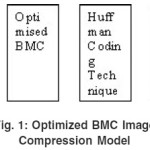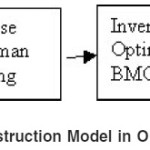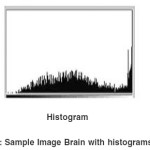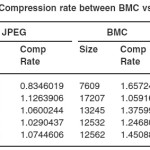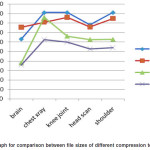N. Subhash Chandra1, M. Bala Raju2, S. Mahaboob Basha3 and A. Govardhan4
¹,2,4Department of Computer Science and Technology, College of Engineering, JNTU, Hyderabad, (India).
³Department of Computer Science and Engg., Al –Habeeb College of Engineering, Chevella, Ranga Reddy Dt (India).
Article Publishing History
Article Received on :
Article Accepted on :
Article Published :
Article Metrics
ABSTRACT:
Digital Spatial Image Processing is a rapidly evolving field with growing applications in Science and Engineering. Spatial Image data requires considerable storage capacity and transmission bandwidth. Despite rapid progress in mass-storage density, processor speeds, and digital communication system performance, demand for data storage capacity and data-transmission bandwidth continues to outstrip the capabilities of available technologies. This is a crippling disadvantage during transmission & storage. So, there arises a need of efficient Image Compression Techniques for compression . This paper deals with Optimized Binary Merge Coding for data compression, which is a modification to the Binary merge coding. Like in BMC the Optimized Binary Merge Coding uses Huffman coding after the modified Binary Merge Coding. The results of the Optimized Binary Merge Coding are compared with Binary Merge Coding and JPEG. An experimental result shows that Optimized Binary Merge Coding improves compression rate compared to Binary Merge coding. The same algorithm can be extended to color images.
KEYWORDS:
Binary Merge Coding; Optimized Binary merge coding; Huffman Coding Technique; JPEG; Bit Plane; Data Table
Copy the following to cite this article:
Chandra N. S, Raju M. B, Basha S. M, Govardhan A. Optimized Binary Merge Coding for Lossless Image Compression. Orient. J. Comp. Sci. and Technol;1(1)
|
Copy the following to cite this URL:
Chandra N. S, Raju M. B, Basha S. M, Govardhan A. Optimized Binary Merge Coding for Lossless Image Compression. Orient. J. Comp. Sci. and Technol;1(1). Available from: http://www.computerscijournal.org/?p=2095
|
Introduction
The History of spatial image data compression started probably about a half of century ago with the works on predictive coding and variable length codes. The technological breakthrough that took place in 60’s, 70’s and 80’s resulted in efficient compression algorithms8,3 that have been standardized in early 1990’s and currently are in common use together with the improvements achieved during the last decade. These advances have brought substantial increase in efficiency of earlier basic techniques. Nevertheless, the last decade was also a period of strenuous search for new technologies of image data compression.
In this paper the effect of using the some modification to the Binary Plane Technique2,5,4 is suggested to optimize the algorithm so the name Optimized Binary Plane Technique. This technique is spatial domain technique we found it better than the Binary Plane Technique.
The paper is organized as follows: the second and third sections are describes about the proposed Optimized Binary Merge Coding for encoding and Decoding. In the fourth section, we presented simulation results and finally the paper concludes with future work.
Optimized Binary Merge Coding and Encoding
The Optimized BMC encoding is involved with two stages i) Optimized binary Plane ii) Huffman coding in that order as given the Fig.1.
Compression Model
The Huffman coding6,8,9 is popular and very widely used techniques so that is not explained here. But the Optimized Binary Merge Coding which is new explained in detail.
Optimized Binary Merge Coding
The Optimized BMC technique is used in the first stage. It is an improvement to BMC.1 In both BMC and Optimized BMC two files namely bit plane and data table are created. The bit plane is collection of 1’s and 0’s to represent whether a pixel is repeated or not. The data table holds only the necessary pixel values. The bit plane and data table are later merged into one file.
On the data generated from OBMC, Huffman coding6,7 is applied to further compress.
The main objective of this technique is to take advantage of repeated values in consecutive pixels positions. For a set of repeated consecutive values only one value is retained.
In the Binary Merge Coding¹ the first part ‘bit plane’ holds the bit 0 for each a pixel similar to previous pixel and the bit 1 for each pixel different from previous pixel. The second part ‘data table’ holds only the necessary pixel values, i.e. for a set of consecutive repeated values; one value is stored in the data table. After merging the bit plane and data table Huffman coding6 is applied and final form of compressed file is generated.
The optimized binary merge coding like binary merge coding generates the ‘bit plane’ and ‘data table’. But It is slightly different from binary merge coding. Instead of checking only for similar values, it is also checked for two successive values with difference in the range -8 to +7 with respect to previous value. If so the differences of the two successive pixels with respect to previous pixel, are merged and stored in one byte only. But this requires more than two codes. So we used 1 for two dissimilar values with difference outside the range -8 to +7, 00 for similar values and 01 with dissimilar values with the difference in the range -8 to 7. Like the above technique the Huffman code follows the optimized bit plane to further compress the file.
Optimized Binary Merge ALGORITHM
BEGIN
open raw image file
open bitplane file
open data table file
cur_pixel=read (image)
write cur_pixel to data table file
append bit 1 to bit_plane
prev_pixel=cur_pixel
while((cur_pixel=read(image))!=eof)
Begin
/* if repeated consecutive pixel value append 00 to bit plane to
indicate that pixel duplicate so not
retained */
if (cur_pixel = prev_pixel) then append bit 00 to bit_planee
else
Begin
/*otherwise check whether the difference b/w two successive pixels is in the range -8 to 7 */
sec_pixel=read(image)
if (diff(cur_pixel,prev_pixel)>-8 and diff(cur_pixel,prev_pixel)<7) and
(diff(sec_pixel,prev_pixel)>-8 and diff(sec_pixel,prev_pixel)<7)
begin
append bit 01 to bit_plane
write merge(diff(cur_pixel,prev_pixel), merge(diff(cur_pixel,prev_pixel))
to datatable file
end
else
append bit 01 to bit_plane write cur_pixel to datatable file unread(image,sec_pixel)
prev_pixel=cur_pixel
end
End
if bit_plane is full then
write bit_plane to bitplane file
End
if bit_plane not empty then
write bit_plane to bitplane file
close raw image file
close bitplane file
close data table file
END
Optimized Binary Merge Decoding
In the reconstruction of the image the Inverse Huffman Technique and Inverse Optimized BPT are applied on compressed file respectively as in the Fig. 2.
Inverse Optimized Binary Merge Coding
In the Inverse Optimized Binary Merge Coding first the Bit Plane and Data Tables are extracted. Using the Data table and Bit Plane the source image is built as inverse of Optimized Binary Merge Coding algorithm.
Results
The brain image is taken as one of sample source images and applied with Optimized Binary Merge Coding to compress. The reconstructed image, its histogram and statistical information are as shown in the Fig. 3.
From the Table 1 which is generated from the results of the execution of the BMC and OBMC programs, It is clear that OBMC technique gives much better compression rate than BMC.
The memory requirement for both BMC & OBMC techniques is very less because the processing is done byte by byte. In case of the JPEG the entire image needs to be brought into memory.
As per as process complexity is concerned BMC and OBMC are simple to implement compared to JPEG. The graph in Fig. 4 is drawn based on the Table 1.
Conclusions
The compression rate of BMC and OBMC is better than JPEG not necessarily in all cases. We have taken only the medical images where BMC & OBMC are better.
But in most of the cases the Optimized Binary Merge Coding is much better than Binary Merging Coding.
The BMC and OBMC techniques can be easily extended to color images by changing the algorithm accordingly.
References
- Subhash Chandra.N., An Hybrid approach Lossless compression for Color Images, Asian journal of information Technology, Medwell publishers, Vol.8, pp 472-472 (2009).
- Skodras.A, Christopoulis.C, and Ebrahimi.E, “The JPEG2000 still image compression standard,” IEEE Signal Processing Mag., vol. 18, no. 5, pp. 36-58, September (2001).
- Wallace.G.K, ” The JPEG still picture compression standard.” IEEE Trans. Consumer Electron, Vol 38, No 1, Feb (1992).
- Jayant.N, ” Signal Compression: technology targets and research directions,” IEEE J. Select Areas Commun., Vol. 10, No.5, pp 796 – 818, June (1992).
- Rafael C.Gonzalez, Richard E. Woods “Digital Image Processing ” Second edition Pearson Education, Printice Hall.
- Shannon,C.E.” A Mathematical theory of communication”. Bell.Sys.Tech. J. 27, 379- 423.
- Huffman,D.A.”A Method for construction of min. redundancy Codes” Proc. IRE, 40(10): 1098-1101, (1951).
- Abramson,N. “Information theory and coding”, McGraw-Hill,New York.
- Schwarz,J.W.,Barker,R.C.”Bit Plane encoding: A Technique for source Encoding” IEEE Trans.aerospace Elec. Systems vol. AES-2 no.4, pp 385-392, (1966).

This work is licensed under a Creative Commons Attribution 4.0 International License.
